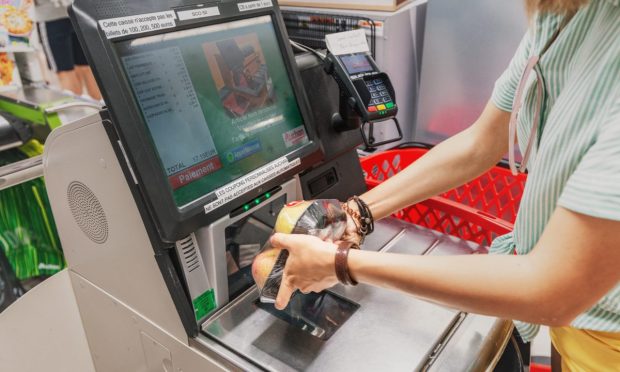Grocers Tap Traditional Self-Checkout Even as Cashier-less Options Emerge

Even as some grocers turn to next-gen payment solutions, traditional self-checkout continues to expand.
Most recently, grocery chain Weis Markets, which operates about 200 stores across seven East Coast states, announced that it was implementing Toshiba Global Commerce Solutions’ Elera platform chainwide in a move to improve self-checkout capabilities, along with other point-of-sale (POS) upgrades.
“Elera supports scalability in deploying customer-focused solutions,” Greg Zeh, chief information officer and senior vice president at Weis Markets, said in the statement. “That’s important when you consider point of sale is a crucial customer touch point and one that is the key to offering a strong customer experience.”
Meanwhile, Australian news outlet News.com.au reported Tuesday (Dec. 20) that discount grocer Aldi has been expanding its trial of self-checkout kiosks in the country, and Hellertown, Pennsylvania, local publication Saucon Source noted last week that grocery and convenience store chain Wawa has been adding the same.
Regarding the former, Aldi Retail Payments Leader Teresa Turner attributed demand for this technology to the brand’s customers’ purchasing habits in an interview with last month.
“We do have a smaller basket size than some of the larger competitors, so there is a large portion of our customers that just have three, four items, and they just want to check themselves out.”
These moves make sense given consumer demand, but kiosks are certainly not at the cutting edge of self-service. Research from the PYMNTS study “Today’s Self-Service Shopping Journey: The New Retail Expectation,” which was created in collaboration with Toshiba Global Commerce Solutions and drew from a survey of more than 2,000 U.S. adults, found that 1 in 3 consumers used self-checkout options for their most recent in-store grocery purchase.
Yet kiosks can seem somewhat outdated alongside emerging alternatives. While systems such as Amazon’s “Just Walk Out,” which rely on equipping entire stores with computer vision and sensor technology, may be prohibitively costly for many grocers, other kinds of systems powered by artificial intelligence (AI) are becoming more widely available.
Take, for instance, the smart cart. Kroger has been expanding the test of its KroGo smart carts created in partnership with Instacart subsidiary Caper. Indeed, Instacart has been on a push to make this kind of self-checkout shopping cart technology widely available to grocers through its Connected Stores initiative.
In an interview with PYMNTS’ Karen Webster for the PYMNTS and PayPal collaboration series “Digital Payments Flip the Script: 10 Merchants and 10 Visions for Digital Transformation,” Caper CEO and Instacart Vice President Lindon Gao explained that smart carts can drive basket size. That is, the cart’s computer vision and AI can remember what shoppers forget, prompting them as they go down each aisle with reminders, recipes and other content.
“The vision for Instacart in this move to acquire Caper is really to create an omnichannel experience, and an omnichannel technology offering to retailers,” Gao said.
That said, other grocers have seen quite the opposite with their self-checkout technology trials. For instance, in September, Wegmans, a regional supermarket chain with more than 100 East Coast stores, announced that it was shutting down its own-device scan-and-go self-service.
“Unfortunately, the losses we are experiencing prevent us from continuing to make it available in its current state,” Wegmans said in a statement emailed to PYMNTS.
